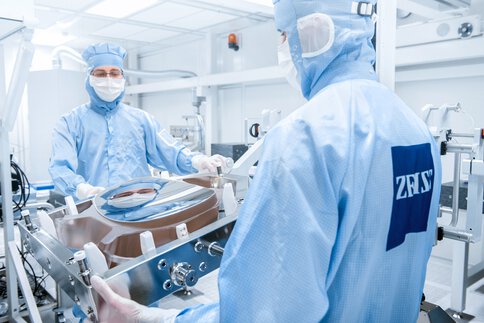The coating makes the difference
Lenses, prisms, mirrors and many other optical components can usually only fulfill their function in photonic systems thanks to multilayer coatings. Diversity is the name of the game in coating technology.
Whenever photonics opens the door to future markets, a rather low-profile discipline has a hand in it: the suppliers of optical coatings. This was also the case with the globally acclaimed laser-ignited nuclear fusion at the National Ignition Facility (NIF) of the Lawrence Livermore National Laboratory (LLNL) in California. When the fusion of light nuclei – in case deuterium and tritium - into helium succeeded in generating 150 times more energy than was required for ignition for the first time in December 2022, this was also due to 7,000 optics from AMETEK ZYGO. According to the coating specialist, 3,000 amplifier plates were used in the experiment alone, which amplified the photon pulse in 192 laser beam tubes and focused it on the tiny fuel pellet. In addition, rotating mirrors, vacuum windows, continuous phase plates and gratings were supplied to the NIF. The optics had to meet the highest surface quality requirements in terms of high fluence.
This will be the case more than ever if inertial fusion technology can be successfully transferred to commercial use as a climate-neutral energy source. This is because the lasers would have to be fired not just once, but tens of thousands of times a day. The optics used not only had to withstand the thermal loads, but also guarantee stable optical properties despite the constant energy input. This is exactly what the optical systems made of mirrors from ZEISS do; the Dutch technology group ASML uses them in its EUV exposure systems to produce microchips with structures in the single-digit nanometer range. In this case too, state-of-the-art coating technology was the key to success: The mirrors are made up of over 100 individual layers with thicknesses of just a few nanometers – and also have specially developed protective layers against oxidation. Despite their complex structure, the mirror surfaces are manufactured with such precision that, scaled to the surface of Germany, they would deviate from the target by just 0.1 mm.
A knowledge-intensive discipline bordering on alchemy
It is not only in high-end applications that the combination of state-of-the-art manufacturing, coating and measuring processes in optics often exceeds the limits of imagination. ZYGO claims to be able to produce spherical, aspherical and free-form optics with “surface tolerances better than 100 picometers” and to detect global surface errors in the range of ten picometers. For comparison: On this scale, a single iron atom is like a massive ten-meter boulder. It is not only the scales that attract attention: The variety of coating processes, the adaptability of the optics to specific applications, wavelengths and pulse durations as well as the variety of possible material combinations on the part of the substrates as well as the coatings also testify to the complexity of this discipline.
Accordingly, the providers make every effort to explain their complicated field of technology. First and foremost is Edmund Optics whose “Introduction to Optical Coatings” explains how the transmission, reflection or polarization properties of optics can be adjusted by specific coatings, which physical laws are decisive for this and which processes with which strengths and weaknesses are available for coating optical components. A basic rule in all of this is that there isn’t just one solution: “No coating technology is the ideal choice for all applications, as each technology has its unique strengths that make it optimal for certain applications,” it says in the relevant chapter. Whether vapor deposition or one of the sputtering processes is more appropriate is therefore determined on a case-by-case basis – and often only iteratively.
But as complex as the matter is, optical coatings are indispensable for photonics. Corresponding layer structures enable mirrors that reflect 99.9999 percent of the incident light, single-wave filters for optical data transmission or fluorescence microscopy, anti-reflective coatings and the optimum adjustment of optics for applications in any wavelength range from ultraviolet to deep into the infrared range.
Highly specialized providers
One consequence of this diversity and complexity is the high degree of specialization of the suppliers in the market, who have complete control of their process chains from design, production and coating of the optics to the final measurement. While the Jena-based asphericon GmbH specializes primarily in aspherical lenses, axicons and aspherical cylindrical lenses as well as mirrors, reflectors and modular laser beam shapers, beam expanders, fiber couplers and ultra-precision mounted optics, Jenoptik subsidiary SwissOptic AG focuses on customized aspherical lenses and free-form surfaces in small series of the highest precision. Here too, the process chain ranges from development, production and coating to test measurements and product qualification. Sill Optics GmbH is also highly specialized: The company not only manufactures laser optics and imaging optics with the highest precision, it also explains to its customers exactly what these optics are all about and what they can be used for. The spectrum of laser optics alone ranges from battery and photovoltaic production to quantum imaging in medical technology or trapped ion lenses. The lens, which is color-corrected for several wavelengths, is able to focus a laser beam “very sharply on an ion located in a vacuum chamber.” And this is where it becomes clear that whenever photonics focuses on future markets, coating technology is not far behind.

